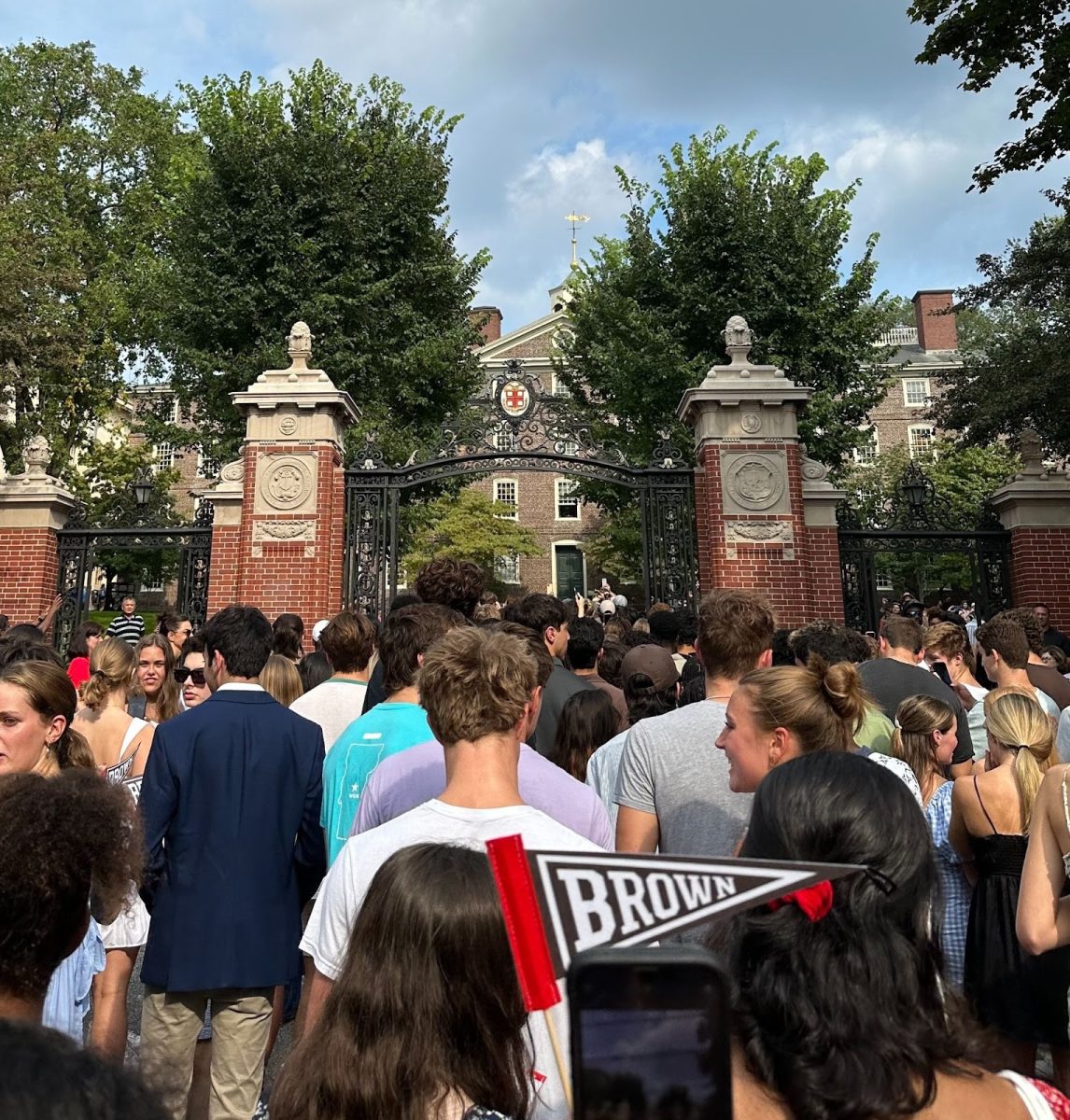On June 29th, 2023, in a 6-3 vote, the Supreme Court ruled against affirmative action in college admissions and changed the college process for high school students around the nation. Students For Fair Admissions sued Harvard University and the University of North Carolina because they claimed the schools were being discriminatory towards Asian students.
Affirmative action is a policy that attempts to increase diversity by promoting opportunities for specific minorities in workplaces and education. Affirmative action has been considered “positive discrimination” in college admissions because it gives primarily Black and Hispanic students a better chance to get into colleges. Eliza Phua ’24 said, “affirmative action was implemented to address the systemic racism that plagued the U.S. by providing minorities and underrepresented groups with more equal opportunities.”
White and Asian people make up the majority of students at most colleges. For example, in 2021, Harvard University had 34.6% White, 13.6% Asian, 9.05% Hispanic or Latino, and 6.21% Black or African American undergraduates.
Affirmative action began during the civil rights movement in the 1950s-60s. It emerged to promote opportunities for marginalized groups. In 1961, Executive Order 10925 signed by President John F. Kennedy was created to ensure equal employment opportunities by enforcing that employment decisions develop without regard to race.
The Supreme Court case began in 2014, when The Students for Fair Admissions, a nonprofit group of students and parents dedicated to eliminating racial bias in college admissions, sued Harvard for discriminating against Asians. The Students for Fair Admissions claimed that Asian students scored higher on the SAT and ACT than any other racial group, yet the percentage of Asian people accepted to top colleges did not reflect that statistic.
In a 2020 article in the Yale Daily News, students in the top decile of academics are revealed to have a different chance of getting into Yale based on their race. Black students in the top decile have a 60% acceptance, Hispanic students have a 34.8% acceptance, yet Asian students only have a 14.3% acceptance. The Students for Fair Admissions argued that it was not fair that only 14% of Asian students were admitted despite being in the top decile.
In 1996, California banned affirmative action in colleges and workforces, leading to a decrease in diversity in many universities in California. At UCLA in 2000, only 2% of incoming freshmen were Black, while in 1994, 7% of incoming freshmen at UCLA were Black. While the original percentage was never particularly high, this drop was a stark shift and does not reflect a diverse community. Schools in California are not diverse, and the removal of affirmative action could be the leading factor towards that. In 2021, only 3.56% of undergraduate students at UCLA were Black. Black students may be less likely to want to apply to schools in California because of this disparity.
Trish Mone ’24 said, “I don’t think diversity is a main factor when applying to college because your race and diversity, for the most part, is just a statistic.” Although she believes that “affirmative action should not be removed,” she also said, “I don’t think diversity is a factor that makes me not want to go to these schools.”
Alia Soliman ’26 said that as an Arab, “Something that I always have to conceptualize is that I am always a minority wherever I go. I don’t think I have ever seen a majority of Arabs in a higher educational institution, which is kind of disappointing.” Most people of color have to accept being the minority. Lily Wiggan ‘24 said, “I think it [the removal of affirmative action] is really unfair and another huge setback for people of color.” Wiggan also said it could “be very damaging for people of color to be at a school with little to no diversity.”
There are plenty of people who deserve the right to be accepted into top colleges but are still rejected. Eliza Phua ’24 said, “the decision to ban affirmative action has added another layer of uncertainty to an already unpredictable process.” There is a fine line in college admissions between the rejections and acceptances. College admission officers consider not only test scores and statistics but also whether an applicant is well-fitted for the school. All colleges besides Georgetown and MIT have been test-optional for a while, and are considering going test-optional permanently because standardized testing often favors White people who can afford tutoring.
Samantha Nair ’26 said, “The new attempt of colleges to make the application process more equitable is misguided and actually a regression of fairness.” Nair said “students should be accepted to schools based on their qualifications, as many students who apply to top schools devote a majority of their youth to their accomplishments and ignoring that based on racial bias is unethical.” She said this because it may be unjust to accept candidates who are less qualified than others. Students who are rejected despite being a valid applicant missed out on the opportunity of being accepted into that school.

A freshman at Brown University, Ben Ro, said, “Given the fact that I am White and Asian this change [the removal of affirmative action] would have made it easier for me to get into college, but it worked out anyways.” Even after experiencing the entire college application process, Ben did not feel underrepresented and did not feel like there was any discrimination towards him. He still got accepted into college and is happy to be where he is. Ben also said that affirmative action “created a more diverse community at my school, which is something I appreciate and think is beneficial.” Ben is lucky to be in a community where he feels safe and happy. However, not all college students notice the diversity in their school or are unaffected by it.
Alexandra Blee ’25 said, “Policies that favor White individuals are still around…legacy admissions are often only possible for White people because people of color were not allowed in large prestigious universities until relatively recently, so a double or triple legacy is not at all realistic.” Colleges such as Brown University recognize the unjustness of legacy admissions and are considering removing it.
In March of 2023, Brown students protested the legacy policy of their school. However, the Brown admission board argued that there are many Brown alumni of color, so in a modern world, legacy does not always favor White students. But why should students whose parents happened to graduate from a prestigious school have an advantage over students whose parents lack a college education?
Brown has also decided to add a new essay prompt to their application process: “Share how an aspect of your growing up has inspired or challenged you, and what unique contributions this might allow you to make to the Brown community.” This prompt allows students to reflect on their upbringing and mention their culture or race if they feel it is relevant to their application. Brown admission officers will have the opportunity to learn about a student’s background and use this information to better understand the factors that have affected the student’s entire application.
Students applying to college come from different backgrounds and are given different opportunities and education. Some students can afford SAT tutors, tuition to private schools, textbooks, and other important resources, while other students cannot. Privileges and opportunities from their background play a significant role in determining a student’s success in college admissions. Some schools are more funded than others and are in wealthier areas, which can benefit the students in that school. However, rich students with a plethora of opportunities should not have a higher acceptance rate than poorer students.
Affirmative action makes the college process more equitable for many students by repairing historical damage, increasing diversity, and making opportunities more equally attainable. Justice Sonia Sotomayor said in an article for Bloomberg Law, “Ignoring racial inequality will not make it disappear.”

